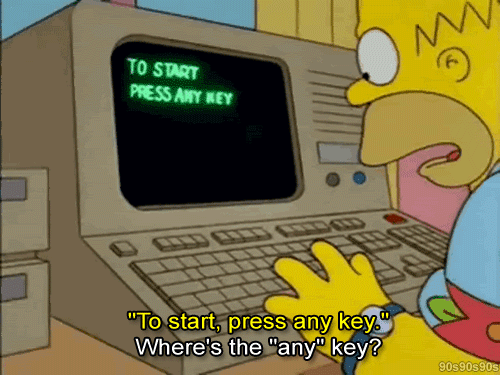The Art of Interactive Design
Interactivity = Speaking + Listening + Thinking between 2 or more actors
User Interface = Speaking + Listening between human and machine
Interactivity design…addresses the entire interaction between user and computer…it considers thinking in the process of optimization. The user interface designer never presumes to address the thinking content of software.
I never thought of interactive design in exactly this way before but this is exactly what they are teaching us here at ITP: we don’t just design an interface to better facilitate human use of a machine; we design the machine from the ground up––its psychology, its logic––to make it better fitted to the people. The constraints of design aren’t defined by the machine, they are defined by us.
As an artiste––as our dear Crawford calls us––this is especially important. I call it good dramaturgy: a piece necessitates the interactivity. It isn’t a gimmick to show how new and different a work is but rather inherent in its logic.
Crawford Was Wrong
Well-executed expressions in other media will always outperform interactive expressions in their superior texture, polish, and detail, but the interactive expression has its own unbeatable advantage: people identify more closely with it because they are emotionally right in the middle of it.
This is why a background in acting is helpful. Its helpful to be trained in detecting and manipulating emotions. All I want in life is to draw people in.
The same rule applies to designing with the computer. Sure, the computer can offer beautiful graphics, but any kid with a few bucks can pick up a calendar with much better graphics. Sure, it’s got wonderful sound capabilities, but how much does a music CD cost these days? Yes, the computer offers lovely video, but for one measly dollar I can rent a videotape with much better video. Software designers who try to compete with movies, music, or printed graphics are guaranteed to lose. The one and only place where we can beat those other industries is in our interactivity, so we should exploit interactivity to its fullest and not dilute it with secondary business.
Perhaps the reason we’re so stalled in terms of the pace of our interactivity design is because he’s wrong: traditional media caught up and now we don’t have to think of new modes of interactivity. I can watch HD video on my phone and make video calls from anywhere in the world to my Mom. That is a sentence that would’ve exploded my brain in 2003.
I like to think that’s why theater and live performance is still so important. It has something that nothing else does and there is a wisdom in it. Knowledge is generating by people being together. Just check out any improv troupe.
It’s also important to remember who holds the reins of culture. Maybe our interactive salvation will come from those who experience the world differently than the mainstream and those have to design for their constraints (i.e. those with disabilities and/or other marginalized people).
…you’re one of the lucky generation to be in the right place and at the right time to change the world. The doorway to each of the other Muses was slowly pried open by the combined efforts of many artists; but the doorway to interactivity was blown open overnight. Our interactive Bachs, Michelangelos, and Shakespeares are probably out there right now, flunking school.
Yeah…. we got Mark Zuckerberg instead.

Leave a Reply
You must be logged in to post a comment.